Decoding Custom PCB Cost: A Comprehensive Guide for 2024
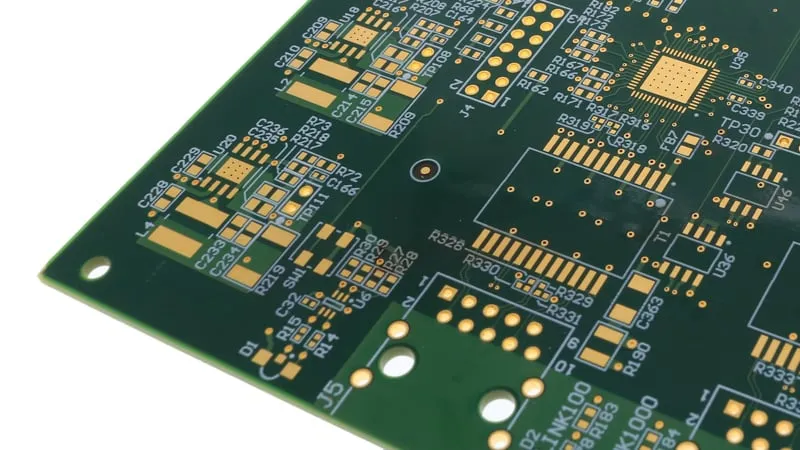
In today's rapidly evolving tech landscape, custom PCBs (Printed Circuit Boards) are the backbone of countless electronic devices. From powering our smartphones to driving complex industrial machinery, their versatility is unmatched. But the question of 'custom pcb cost' often arises. This article will unravel the complexities of PCB pricing, guiding you through the factors that influence cost, helping you make informed decisions, and ensuring your project stays within budget while maintaining quality. Whether you're an experienced engineer or a budding maker, this guide will equip you with the knowledge to navigate the landscape of custom pcb costs and make more informed decisions when it comes to your next project.
Key Factors Influencing Custom PCB Cost

Custom PCB (Printed Circuit Board) costs are influenced by a multitude of factors, each contributing to the overall expense of manufacturing. These factors range from the physical dimensions of the board and its complexity to material choices and order specifics. Understanding these key cost drivers is crucial for effective budgeting and design optimization. This section will delve into the primary factors that dictate the cost of custom PCBs, providing a detailed perspective on each element.
- Board Size
The physical dimensions of the PCB directly impact the amount of material used and the processing time required, thereby affecting cost. - Layer Count
The number of conductive layers within the PCB (e.g., 2-layer, 4-layer, 6-layer, etc.) significantly affects manufacturing complexity and cost. - Material Selection
The choice of material (e.g., FR-4, high-speed laminates, flexible substrates) has a significant impact on performance, durability, and cost. - Design Complexity
Features such as fine-pitch components, via types, and impedance control increase manufacturing difficulty and overall cost. - Order Quantity
The number of boards manufactured influences the per-unit cost, with larger production runs typically leading to lower prices. - Surface Finish
The type of surface finish applied (e.g., HASL, ENIG) affects both performance and cost. - Solder Mask
The color and application of solder mask affect cost and manufacturability. - Turnaround Time
The timeframe for manufacturing, especially rush orders, influences cost due to expedited processing.
Board Size and Layer Count: A Cost Driver
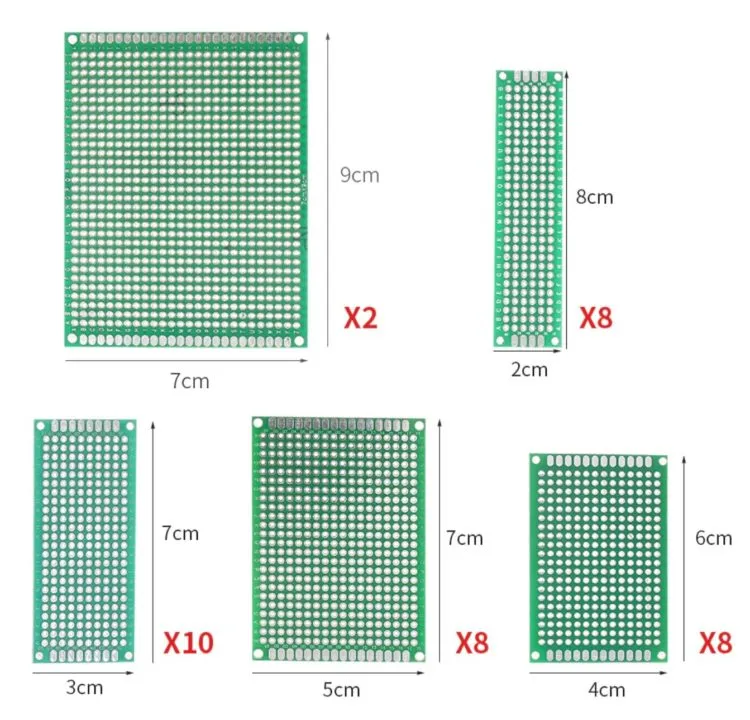
The physical dimensions of a printed circuit board (PCB), along with the number of conductive layers it incorporates, are primary determinants of manufacturing cost. Larger boards and increased layer counts directly translate to higher material consumption and more complex processing, thereby escalating the overall cost.
Specifically, as PCB dimensions increase, more raw material is needed, which increases material costs. In addition, processing time also goes up for larger PCB boards. Moreover, the complexity of manufacturing is greatly increased with the need for more complicated fabrication processes and equipment, further increasing costs.
| Parameter | Impact on Cost | Reasoning |
|---|---|---|
| Increased Board Size | Higher | Greater material usage, extended processing time |
| Increased Layer Count | Higher | More complex lamination, additional processing steps, potentially lower yields |
| 4-layer PCB vs. 2-layer PCB | Higher | Additional layers require more materials, more processing steps and increase fabrication complexity. |
| 8-layer PCB vs. 4-layer PCB | Higher | Additional layers require more materials, more processing steps, increased fabrication complexity and more stringent tolerances. |
The layer count of a PCB refers to the number of conductive layers, each typically made of copper, that are laminated together to form the board. PCBs can range from single-layer (one conductive layer) to multi-layer boards (containing many conductive layers). Multilayer PCBs are typically used for complex designs, but as the number of layers goes up, so does the cost of production. This is due to the more complicated fabrication process, including the additional lamination steps and the increased risk of manufacturing defects, which are harder to resolve in multi-layer PCBs.
In summary, both board size and layer count exert a significant influence on the cost of a PCB. While these parameters may be indispensable in meeting specific design requirements, careful consideration should be given to their impact on the overall budget. It's generally beneficial to strive for the smallest board size and the minimum number of layers that meet the functional requirements.
Material Selection: FR-4 vs. Advanced Materials
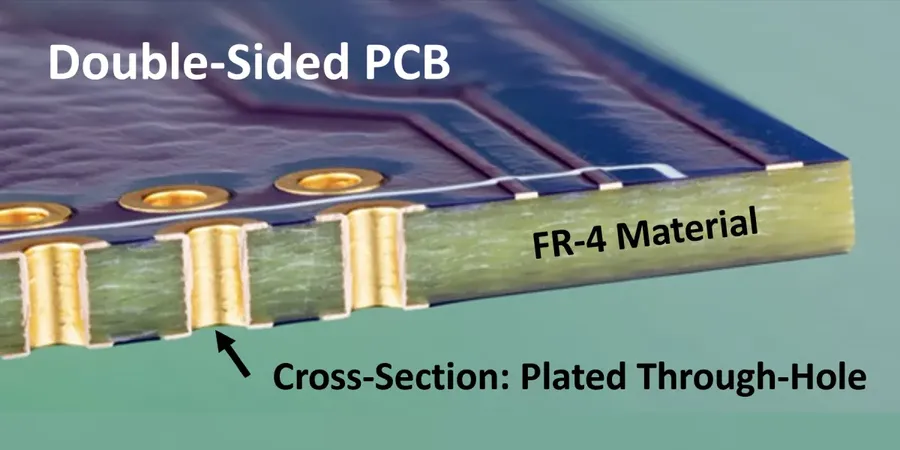
The choice of material for a PCB significantly influences both its cost and performance. While FR-4 is the industry standard, advanced materials offer enhanced electrical, thermal, and mechanical properties but come at a higher price. Understanding these trade-offs is crucial for optimizing your PCB design for its intended application and budget.
| Material Property | FR-4 | Advanced Materials (e.g., High-Speed Laminates, Flexible Substrates) |
|---|---|---|
| Cost | Lower | Higher |
| Dielectric Constant (Dk) | ~4.5 | Variable, often lower for high-speed applications (~3.0 - 3.7) |
| Loss Tangent (Df) | ~0.02 | Lower, typically <0.01, for high-frequency signals |
| Thermal Conductivity | Low | Can be higher, especially with metal-backed boards or specific thermal laminates |
| Maximum Operating Temperature | ~130°C | Can be significantly higher, depending on the specific material |
| Mechanical Flexibility | Rigid | Flexible or rigid-flex options available |
| Application | General-purpose PCBs, low to medium frequency applications | High-speed digital, RF/microwave, flexible circuits, high temperature environments |
The primary consideration when selecting materials is balancing cost with performance requirements. FR-4 offers a cost-effective solution for most general applications, but it may not suffice for high-speed, high-frequency, or high-temperature conditions.
For high-speed applications, materials with lower dielectric constants (Dk) and loss tangents (Df) are essential to reduce signal degradation and maintain signal integrity. For example, materials like Rogers and Isola are frequently used for RF and microwave applications due to their superior electrical properties.
When considering flexible circuits, flexible substrates like polyimide offer the mechanical bendability needed for unique applications. These materials, while more costly than FR-4, provide a solution where rigid PCBs are unsuitable.
The decision to use advanced materials should be carefully evaluated based on the specific requirements of your project. It's crucial to ask if the performance gains justify the increased cost. Factors like signal speed, operating temperature, and mechanical stress should all be considered to make the most appropriate material selection.
Design Complexity and its Impact on Cost
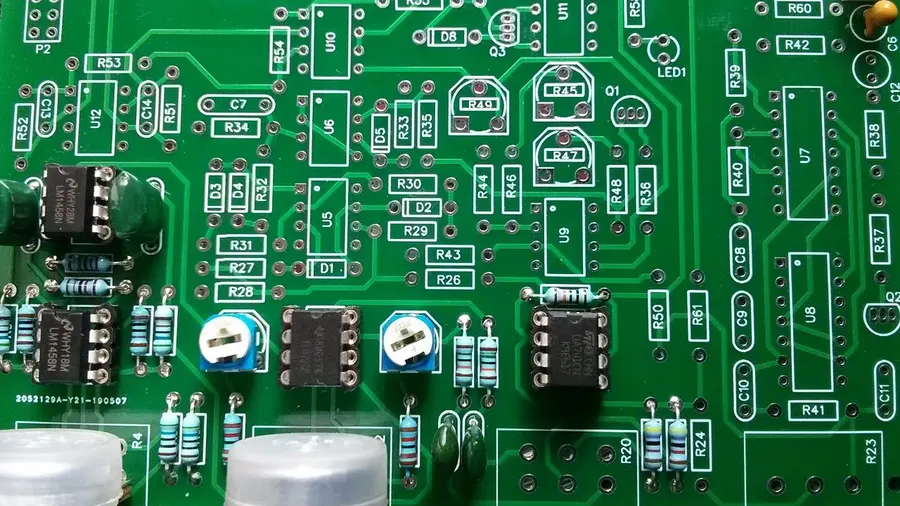
The complexity of a Printed Circuit Board (PCB) design significantly influences its manufacturing cost. Intricate designs necessitate more precise and time-consuming fabrication processes, leading to higher expenses. Features such as fine-pitch components, the density and type of vias, and controlled impedance requirements all contribute to increased manufacturing complexity and, consequently, higher costs.
Several design elements contribute to this increased complexity:
- Fine-Pitch Components
Components with very small lead spacing require advanced assembly techniques, demanding higher precision and specialized equipment which increases cost. - Via Density and Types
The number and type of vias (through-hole, blind, buried) directly impact manufacturing complexity. Higher via densities require more drilling and plating processes, escalating costs. Specialized vias, such as blind and buried vias, further add to the fabrication complexity due to the need for specialized processing and multiple drilling and plating steps. - Impedance Control
Designs requiring controlled impedance necessitate precise trace widths, spacing, and dielectric thicknesses. This often mandates tighter manufacturing tolerances and additional testing, increasing the fabrication costs. - High-Density Interconnect (HDI)
HDI boards, characterized by fine lines and microvias, are more expensive to manufacture than standard PCBs. The fabrication of HDI PCBs demands advanced equipment and techniques. - Component Placement Density
A high density of components, especially on both sides of the board, requires more complex assembly techniques and can increase the risk of errors. This also increases manufacturing costs.
To reduce costs without compromising functionality, consider these design simplification strategies:
- Use Standard Components
Opt for components with larger lead spacing where feasible. This can simplify assembly and reduce costs. - Reduce Via Density
Minimize the number of vias and use through-hole vias where possible, avoiding blind and buried vias when they are not absolutely essential. - Minimize Trace Lengths
Keep trace lengths as short as possible, which can reduce signal integrity issues and the need for impedance control. - Standardize Layout Patterns
Use standard layout patterns and footprints, and avoid custom designs when possible. - Optimize Layer Stackup
Efficiently plan the layer stackup and avoid unnecessary layers. Fewer layers reduce cost and simplify the manufacturing process. - Early Collaboration With Manufacturer
Consult with the manufacturer early in the design process. Manufacturers can offer design for manufacturability (DFM) feedback that could help reduce cost by avoiding potential manufacturing issues.
Order Quantity and its Effect on Per-Unit Price
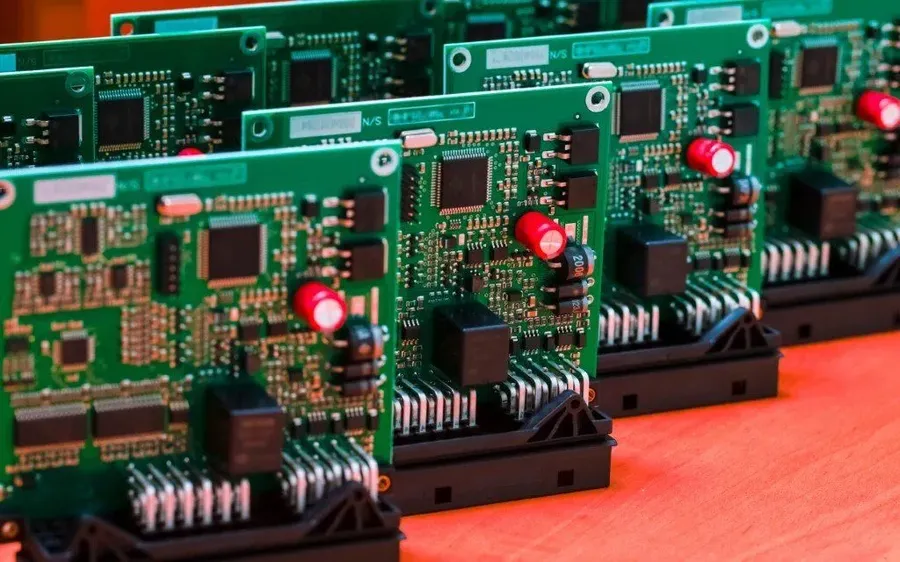
The quantity of PCBs ordered has a profound impact on the per-unit cost, primarily due to economies of scale in manufacturing. Larger production runs distribute fixed setup costs across more units, leading to a significant reduction in the cost per board. This principle is crucial for both prototyping and mass production, and understanding its nuances is essential for effective budgeting.
| Order Quantity | Approximate Per-Unit Cost Impact | Primary Cost Drivers |
|---|---|---|
| Prototype (1-10 units) | High | High setup costs, material waste, manual handling |
| Small Batch (10-100 units) | Medium to High | Reduced setup costs, some automation, material efficiency |
| Medium Batch (100-1000 units) | Medium | Optimized setup, improved material usage, semi-automated process |
| Large Batch (1000+ units) | Low | Highly automated production, minimal setup cost per unit, volume discounts |
Minimum Order Quantities (MOQs) are a critical factor when assessing cost. Most manufacturers enforce MOQs to cover their operational costs. For prototypes or small projects, these MOQs can lead to inflated costs because you might be paying for more boards than you initially need. Therefore, understanding the manufacturer's MOQs early in the design process is essential to optimize cost.
The relationship between order quantity and cost is not always linear. While per-unit costs typically decrease with increasing volume, there can be breakpoints where significant price drops occur due to increased automation and bulk material purchase options. Identifying these breakpoints can help strategically plan production runs to maximize cost efficiency.
The Role of Surface Finish and Solder Mask
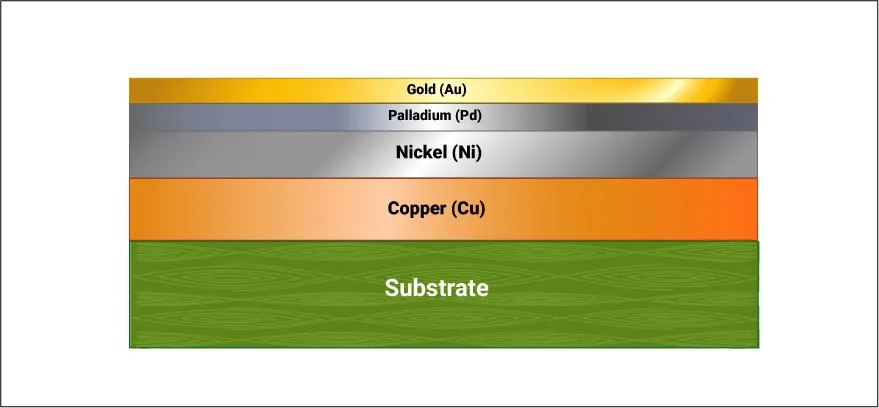
The selection of surface finish and solder mask is a crucial step in PCB manufacturing, directly impacting both the performance and cost of the final product. These choices must align with the intended application and performance requirements, while also considering budgetary constraints. Surface finish affects solderability and long-term reliability, whereas solder mask provides insulation and protection against oxidation.
| Surface Finish | Description | Cost | Pros | Cons | Typical Applications |
|---|---|---|---|---|---|
| HASL (Hot Air Solder Leveling) | Molten solder is applied to the PCB and leveled with hot air. | Low | Low cost, good solderability, widely available. | Uneven surface, not suitable for fine-pitch components, contains lead (lead-free options available but more expensive). | General purpose PCBs, through-hole components. |
| ENIG (Electroless Nickel Immersion Gold) | A layer of nickel is deposited, followed by a thin layer of gold. | High | Excellent solderability, flat surface, good for fine-pitch components, good oxidation resistance. | High cost, can suffer from 'black pad' issues if not manufactured correctly | Fine-pitch components, wire bonding, demanding applications. |
| Immersion Tin | A thin layer of tin is chemically deposited onto the copper pads. | Medium | Good solderability, flat surface, lead-free. | Can be prone to whiskering, requires careful handling. | Lead-free assemblies, general-purpose electronics. |
| Immersion Silver | A thin layer of silver is chemically deposited onto the copper pads. | Medium | Good solderability, flat surface, lead-free, good conductivity. | Susceptible to tarnish, requires special packaging and handling. | High frequency applications, wire bonding. |
| OSP (Organic Solderability Preservative) | A thin layer of organic compound is applied to protect copper before soldering. | Low | Low cost, good solderability, lead-free. | Short shelf life, sensitive to handling. | General-purpose PCBs, SMT assemblies. |
Solder mask is an insulating layer applied to the PCB, except for the solder pads, preventing solder bridges and oxidation. While green is the standard color due to historical reasons, other colors like red, blue, black, and white are available at a slightly increased cost. The choice of solder mask color depends on aesthetic preferences, contrast requirements for silkscreening, and visibility for inspection.
The optimal surface finish and solder mask selection requires a careful evaluation of cost versus performance. For less demanding applications, cost-effective solutions like HASL and standard green solder masks are often sufficient. However, for high-reliability, fine-pitch, or high-performance applications, investing in ENIG or other premium surface finishes may be necessary to ensure the desired product quality and longevity.
Turnaround Time and Rush Order Fees
Expedited manufacturing and quick turnaround times for custom PCBs significantly impact overall cost, often demanding a premium for faster delivery. Balancing urgency with budget requires careful consideration of the trade-offs between standard lead times and express manufacturing options. Understanding these cost implications is crucial for effective project management and budget adherence.
Standard PCB manufacturing timelines typically range from a few days to a few weeks, depending on the manufacturer and the complexity of the design. Opting for faster turnaround, commonly referred to as a 'rush order,' will incur additional costs due to the manufacturer needing to prioritize your order, reallocate resources, and often pay overtime to production staff. The premium for rush orders can vary greatly, depending on the manufacturer and the urgency of the turnaround requested.
- Factors Influencing Rush Order Fees
The complexity of the PCB, the order quantity, and the specific manufacturer's policies all contribute to the price of a rush order. Higher layer counts, intricate designs, and larger quantities will generally increase the rush order fees. - Balancing Speed and Budget
Carefully assess your project's deadlines and weigh the cost of expedited manufacturing against the potential benefits of faster delivery. In many cases, proper project planning and early ordering can avoid the need for rush orders, saving you considerable costs. If fast turnaround is imperative, obtain quotes from multiple manufacturers to identify the most cost-effective option. - Trade-offs between Standard and Express Manufacturing
Choosing a standard lead time generally provides a more cost-effective solution, while an express option ensures faster delivery but carries a higher cost. Evaluating the critical needs of the project is important. When your project schedule is flexible, standard lead times are recommended to reduce overall cost. However, for projects with stringent deadlines, the express option can be a necessary investment. - Negotiating Turnaround Time and Cost
If possible, negotiate turnaround times with PCB manufacturers, particularly for larger orders. Some manufacturers may offer tiered pricing based on lead time. Transparent and open communication with the manufacturer may lead to a cost-effective solution that meets your needs.
Choosing the Right PCB Manufacturer for Your Budget
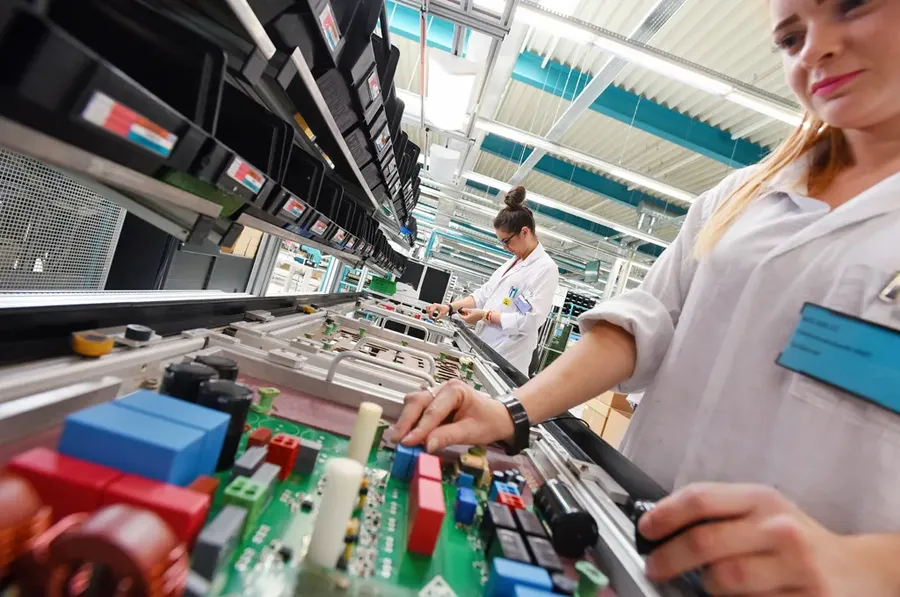
Selecting the appropriate PCB manufacturer is critical for balancing cost, quality, and project requirements. The decision significantly impacts the final product's performance, reliability, and overall budget. A thorough evaluation of different manufacturing options ensures the chosen partner aligns with specific needs and constraints.
There is a wide range of manufacturers, each with unique strengths and focus areas, requiring designers to carefully assess their individual needs against the capabilities of these manufacturers. Factors such as production scale, specific technologies, quality standards, and cost-effectiveness must all be considered.
Here are some key insights and suggestions to consider when selecting a PCB manufacturer:
- Assess Your Project Needs
Clearly define your project's requirements, including the complexity of the board, layer count, material specifications, and any special technology needs. This will guide your search towards manufacturers with suitable capabilities and specializations. - Compare Manufacturing Options
Evaluate manufacturers offering a variety of technologies and services to identify those with the optimal balance of cost, quality, and technology for your application. Consider options from small local shops to large overseas manufacturers, analyzing their technological proficiency and service capabilities. - Analyze Cost Structures
Investigate the pricing models for different manufacturers. Cost-effectiveness requires balancing price with service and support. Some manufacturers may offer lower unit prices but could have hidden fees or lack crucial support services. - Quality Standards and Certifications
Prioritize manufacturers with robust quality control and adherence to industry standards (such as ISO certifications). Ensure that the selected manufacturer is capable of meeting or exceeding the quality benchmarks your project requires, including material handling and process control. - Evaluate Communication and Support
A responsive and supportive manufacturer can streamline the design and manufacturing process. Look for manufacturers who provide clear and timely communication, design feedback, and post-production support. - Check Turnaround Times
Confirm that the manufacturer can reliably meet the desired production timelines. Some manufacturers may offer expedited services for a higher cost, whereas others may have standard timelines that align with standard project schedules. - Consider Minimum Order Quantities (MOQs)
Factor in the manufacturer's MOQ requirements, especially for prototypes. Some manufacturers may offer flexible options for small quantities, which is crucial during initial stages of testing and design refinement.
Frequently Asked Questions about Custom PCB Costs
Understanding the costs associated with custom PCBs can be complex. This section addresses frequently asked questions to provide clarity on the factors influencing PCB pricing.
- How expensive is it to make a custom PCB?
The cost of a custom PCB varies significantly based on several factors, including size, layer count, materials, complexity, and order quantity. A simple, small, double-sided PCB may cost a few dollars per piece in large quantities, while complex, multi-layered boards with advanced materials can cost hundreds or even thousands of dollars each in small production runs. Prototyping usually incurs higher per-unit costs due to setup and smaller volumes. - Why are custom PCBs often perceived as expensive?
Custom PCB fabrication involves intricate processes requiring specialized equipment and skilled labor. Each stage, from design to etching to component placement, involves costs that contribute to the final price. Additionally, the cost of materials, especially advanced substrates and finishes, can add significantly to the overall expense. The non-recurring engineering (NRE) costs for tooling, especially with small batch runs, also elevates cost. Finally, any rush order fees will also greatly increase the price. - What is the average cost for a PCB?
There is no single 'average' cost for a PCB because it depends heavily on its specifications. However, a simple, double-sided PCB for hobby or educational use could cost a few dollars each when produced in higher quantities. For more advanced PCBs, such as those used in industrial equipment or telecommunications, costs can range from tens to hundreds of dollars per board. Prototypes will have higher costs because of the set-up costs, however a batch of prototypes is generally cheaper than a one off prototype. - How much does a PCB designer charge per hour?
The hourly rate for a PCB designer varies based on experience, complexity of the design, and location. Entry-level designers might charge between $30 to $50 per hour, while experienced and highly specialized designers can command rates from $80 to $150 or more. Complex designs with high-speed requirements or tight tolerances will usually be at the higher end of this scale. Furthermore, some designers charge per project, not per hour. - Does PCB size significantly impact cost?
Yes, PCB size is a significant cost driver. Larger boards require more material and more processing time to manufacture, thus increasing costs. Manufacturers often charge on a per-unit area basis for PCB production, therefore boards with large areas are more expensive. Furthermore, yields tend to be lower for large area boards which also drives up cost. - How does the number of layers affect custom PCB costs?
The number of layers in a PCB is one of the largest factors in cost. As the layer count increases so does material usage and processing times. Double-sided PCBs are the simplest to manufacture while 4-6-8 layer boards require more steps and precision, causing costs to rise. - What is the impact of choosing advanced PCB materials?
Advanced PCB materials, such as high-frequency laminates and flexible substrates, often have higher material costs than standard FR-4. These materials may offer improved thermal performance, electrical characteristics, or flexibility but can significantly increase cost. Therefore, their use should only be considered if these characteristics are strictly needed.
Understanding the factors that influence custom pcb cost is crucial for planning your electronic projects effectively. By carefully considering board size, layer count, material selection, design complexity, and order quantity, you can significantly optimize your expenses. Whether you're seeking a cost-effective prototype or a large production run, having a firm grasp of these principles will empower you to make informed decisions. As technology advances, it’s important to remain updated on manufacturing process and material developments that can further impact custom pcb costs. With this in mind, continuous learning about PCB design and manufacturing will help to maximize your budget while keeping up with the industry's needs.
 AnyPCBA
AnyPCBA